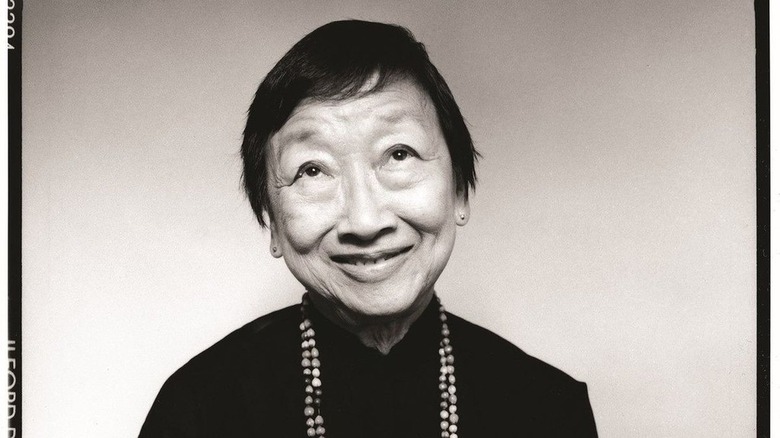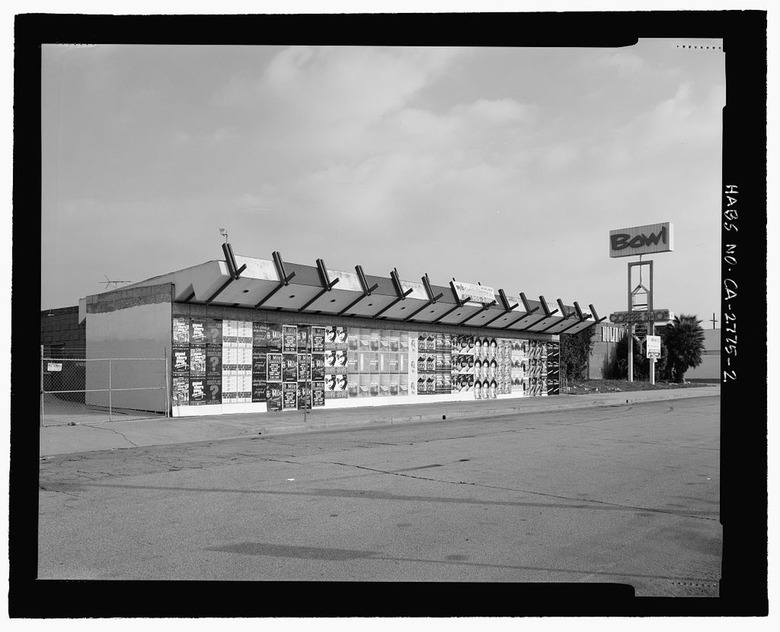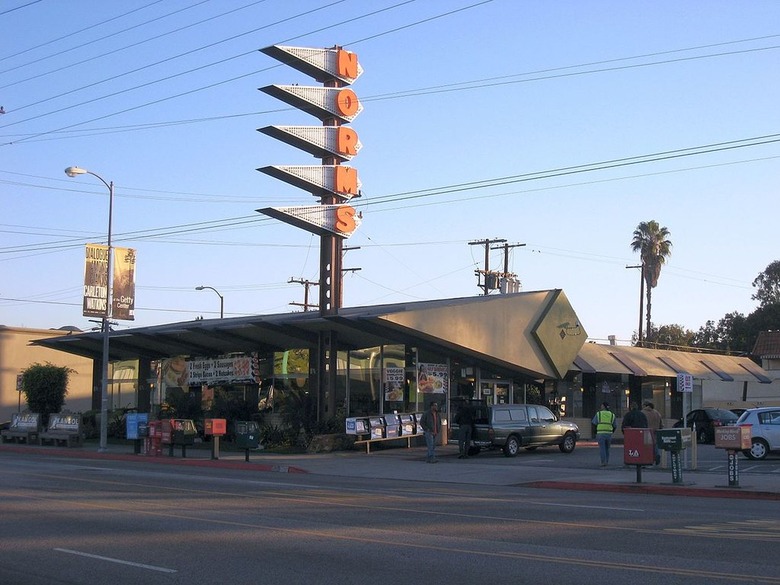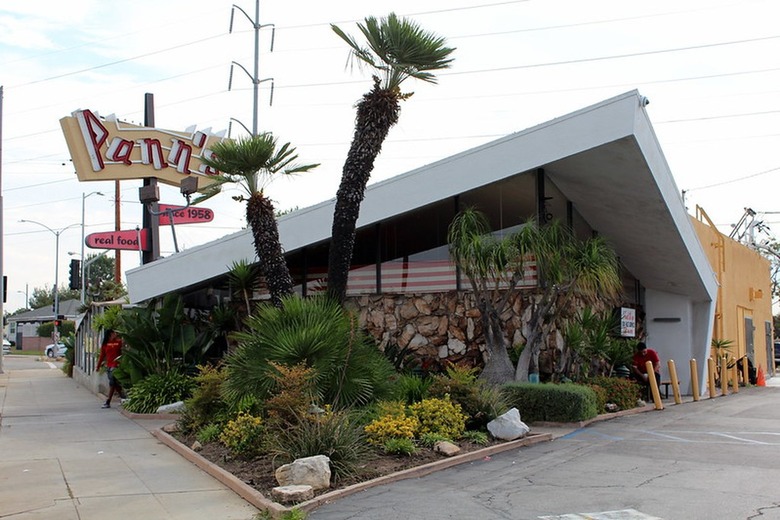Architect Helen Fong Is An Unsung Hero Of The Googie Architecture Movement
It's hard enough breaking into a male-dominated field as a woman in 2023, but try doing it in the '50s as a Chinese American woman born into a family who owns and operates a small laundromat in Los Angeles' Chinatown. This is exactly what the unsung architectural hero Helen Liu Fong did back in postwar America.
Like so many women of color throughout history, Fong's contributions have largely gone unjustly unrecognized and underappreciated. She played a critical role in the development of the California coffee shop architectural style called "Googie" that was pioneered in the mid-'50s and '60s in Southern California at the firm Fong worked at, Armet and Davis.
Googie architecture is characterized by jaunty, futuristic structures with swooping roofs, expansive indoor-outdoor dining spaces, and space-age aesthetics all meant to catch the attention of drivers looking for a place to stop for a bite. The term "Googie" originated through one of the first-ever buildings constructed in this style: a coffee shop in Los Angeles called Googie's that was designed by architect John Lautner in 1949.
Fong might not have had the same recognition for her Googie contributions as Lautner, but her influence demands highlighting. She was best known for her interior architectural design prowess, taking the lead on the design of iconic Los Angeles institutions and pillars of Googie design, such as Norms Restaurant; the Holiday Bowl; and her crowning achievement, Pann's Coffee Shop.
Fong never let her race or gender limit her aspirations and declared from a young age that she wanted to create buildings. She received a degree in city planning from UC Berkeley in 1949 and then worked her way up. She started as a secretary for fellow Chinese American architect Eugene Choy before landing a junior draftsman position at Armet and Davis.
"She was basically responsible for running the office," John English, an L.A.-based architectural historian and historical preservationist, tells Hunker. "She was clearly in charge. She was equally as proud of the way in which she organized the office and the procedures of the office as she was of her work." English says that Victor Newlove, who joined Armet and Davis in 1963 and became a partner in 1972, stated, "If it wasn't for Helen, I think everything would have just fallen apart."
English is a veritable Helen Fong scholar who has given many talks about Fong and her work, including at the 2022 Googie World Expo, the Chinese American Museum in Los Angeles in conjunction with their exhibition on Chinese American architects in 2012, and during Modernism Week in Palm Springs earlier this year. English knew Fong personally and even considered her a friend.
In 1993, he was part of the Los Angeles Conservancy's Modern Committee, which put on an exhibition about Googie architecture that included a panel discussion. Fong was one of the featured panelists among others from Armet and Davis, though English hadn't heard too much about her at that point. "We didn't really know much about her," he says. "No surprise — she was just like so many women who have been sidelined and overlooked, either deliberately or even just through assumptions and so forth."
But after the event, English and Fong struck up an enduring friendship that fueled his appreciation for her and her work. "In some ways, she was very reserved and measured but also very opinionated when it came to architecture and design," English says. "She was proud of her work, but she was more comfortable talking about it as a collaborative effort for the most part."
While Fong wasn't in it for the glory or accolades, it's clear that her vision was central to many of Armet and Davis' most famous structures, some of which are still standing to this day. "I can remember the first time that she actually took ownership over the design of Pann's Coffee Shop," says English. "She said, 'You know, I really designed Pann's.' And I was like, 'Oh, I can't believe she just said that' because she hadn't really come out and said something like that before."
Pann's is considered one of the most exemplary beacons of Googie architecture and has miraculously endured since its opening in 1958. "At Pann's and other places, we can really see Helen's creativity and her expertise in coming up with a cohesive design for the whole interior," says English. "She would refer to it as 'interior architecture.' She clearly was a master at pulling together the different elements and the extraordinary colors that she used. There's a wonderful color palette that's always thoughtful and integrated throughout these interiors."
Fong carefully considered every last element of a building's interior, making the all-important decisions about the spatial geometries and working closely with fixtures designers and suppliers for the lighting, tables, and seating. She was so meticulous, in fact, that legend has it that just before Pann's was set to officially open, Fong wasn't satisfied with a bland wall of white tiles that eaters would face from the counter, so she took a bottle of red nail polish and painted a row of the tiles to create some visual intrigue.
Fong's legacy deserves all of the attention and respect she was content to live without. Her brilliant interior architecture was instrumental to the Coffee Shop Modern movement and beyond, though she remained mostly behind the scenes.
"Everyone is looking for the auteur. You're looking for who is responsible for something, and that's really not very accurate with architecture," explains English. "You've got Frank Lloyd Wright and John Lautner, these amazing auteurs, but even their buildings would not have happened without incredibly talented craftsmen and designers and engineers. In the case of a commercial firm like Armet and Davis, it's even more so; it's really a collaborative effort." There was no one more important to this collaboration than Fong.



